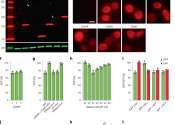A miniaturized semiconductor biochip to identify drug-resistant pathogens
Evolving strains of multi-drug resistant pathogens are a growing global concern, outpacing drug discovery efforts and undermining the efficacy of existing antibiotics. The development of comprehensive diagnostics for clinical ...









